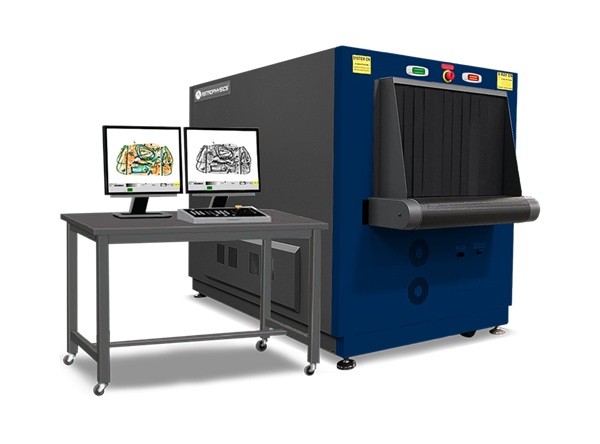The Role of X-Ray Technology in Border Patrol Operations

In the realm of border security, the challenges faced by patrol agencies are as diverse as the threats they aim to mitigate. With the ever-increasing volume of goods and people crossing borders, the need for advanced technology has become paramount. Among the various technological advancements, X-ray technology has emerged as a pivotal tool in enhancing security and efficiency in border patrol operations. This article explores how X-ray technology, including its application in a border patrol X-ray truck, is revolutionizing the way authorities safeguard national borders.
The Mechanism of X-Ray Technology
At its core, X-ray technology employs electromagnetic radiation to create images of the internal structure of objects. In border patrol operations, X-ray systems are designed to penetrate materials such as containers, vehicles, and luggage, revealing detailed information about their contents without the need for physical inspection. This non-intrusive approach not only speeds up the inspection process but also reduces the risk of damaging goods or disrupting transport logistics.
The integration of advanced imaging software further enhances the capabilities of X-ray machines. Modern systems can differentiate between various materials, providing operators with the ability to identify potential contraband, weapons, or illegal substances hidden within legitimate cargo. The efficiency of this technology is crucial in a border security context, where time-sensitive operations are often critical to maintaining safety and order.
Enhancing Detection Capabilities
One of the primary advantages of employing X-ray technology in border patrol operations is its enhanced detection capabilities. Traditional inspection methods, such as manual searches or canine units, while effective in certain scenarios, can be time-consuming and are sometimes limited in scope. X-ray systems, on the other hand, can simultaneously scan multiple vehicles or containers, resulting in a significant reduction in wait times at border crossings.
Moreover, the ability to detect anomalies within shipments provides border patrol agents with a powerful tool for identifying potential threats. In recent years, the rise of sophisticated smuggling techniques has made it increasingly difficult to identify illegal activities through standard inspection methods. X-ray technology excels in this regard, allowing authorities to visualize hidden compartments and assess the legitimacy of shipments more effectively.
Streamlining Operations and Improving Efficiency
In the busy environment of border crossings, efficiency is crucial. Delays can lead to economic repercussions, including lost revenue for businesses and increased congestion at border checkpoints. By incorporating X-ray technology into their operations, border patrol agencies can streamline the inspection process significantly.
X-ray machines can be deployed in various configurations, from portable units for quick inspections during routine checks to larger, fixed installations for high-volume processing. The versatility of these systems means that they can be tailored to meet the specific needs of different border environments, ensuring that resources are used optimally.
Additionally, the speed of X-ray inspections means that border patrol agents can process vehicles and cargo more rapidly, allowing for a smoother flow of traffic. This efficiency not only enhances national security by enabling more thorough inspections but also fosters better relationships with traders and travelers, who appreciate reduced waiting times.
Training and Skill Development
While the technology itself is a powerful asset, the effectiveness of X-ray systems in border patrol operations heavily relies on the training and expertise of the personnel operating them. Agents must be equipped with the necessary skills to interpret X-ray images accurately and make informed decisions based on their findings.
Training programs focused on X-ray interpretation, recognition of suspicious patterns, and understanding the nuances of different materials can significantly improve the detection rate of illicit goods. Continuous professional development in this area is essential, as smugglers are constantly evolving their tactics. By ensuring that agents are well-trained and up-to-date with the latest advancements in X-ray technology, border patrol agencies can maintain a robust security posture.
Addressing Privacy and Ethical Concerns
As with any technology that involves surveillance and inspection, the use of X-ray systems in border patrol operations raises important privacy and ethical considerations. Critics argue that the deployment of X-ray technology could lead to intrusive inspections that violate personal privacy rights. It is essential for border patrol agencies to navigate these concerns carefully.
Implementing clear protocols and regulations governing the use of X-ray technology can help alleviate public concerns. Transparency about how and when these systems are used, combined with strict adherence to privacy standards, can foster public trust. Additionally, agencies should engage with communities to explain the benefits of X-ray technology in terms of enhanced security without compromising individual rights.
The Future of X-Ray Technology in Border Security
As technology continues to advance, the future of X-ray systems in border patrol operations looks promising. Innovations such as AI-driven image analysis and enhanced imaging techniques will likely further improve the capabilities of these systems. Integration with other technologies, such as machine learning and big data analytics, could lead to even more efficient detection mechanisms.
Moreover, the global landscape of border security is constantly evolving. As threats become more sophisticated, so too must the methods used to counter them. X-ray technology will be at the forefront of these efforts, providing border patrol agents with the tools they need to adapt to new challenges effectively.
In conclusion, X-ray technology plays a critical role in enhancing security and efficiency within border patrol operations. By providing non-intrusive inspection methods, improving detection capabilities, and streamlining operational processes, X-ray systems empower border agencies to meet the demands of modern security challenges. As we look to the future, ongoing advancements in this technology will undoubtedly continue to shape and enhance the effectiveness of border security measures worldwide.




